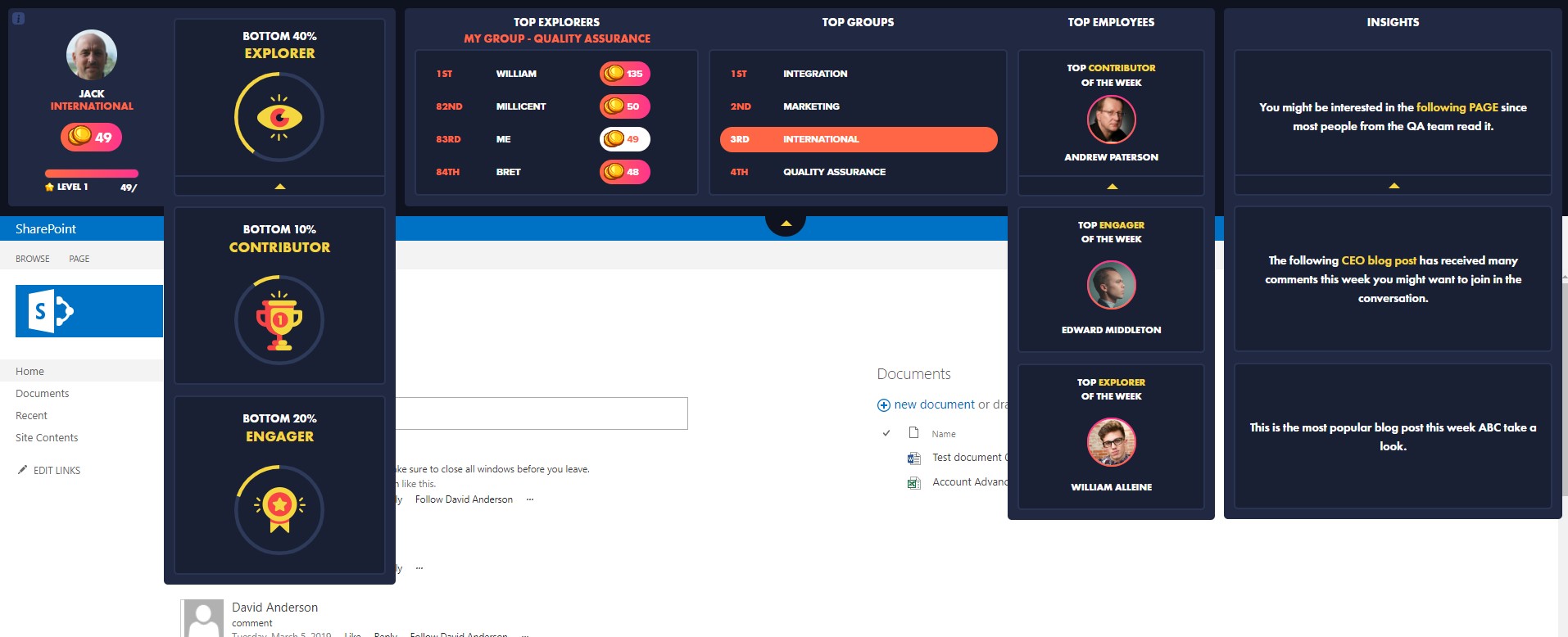Customer engagement analytics is a crucial tool for businesses looking to understand and optimize their interactions with customers. By analyzing how customers interact with a brand, businesses can gain insights into customer behavior, preferences, and needs. This understanding can lead to improved customer loyalty and retention, which are vital for long-term business growth. Exploring the importance of customer engagement analytics and how concepts like customer success, satisfaction, and experience differ can help businesses build strong relationships and align their brand vision and voice to promote a more engaged customer base.
Customer Loyalty and Retention
Customer loyalty and retention are key indicators of a business’s health and sustainability. Loyal customers not only continue to purchase products or services but also advocate for the brand, bringing in new customers through word-of-mouth. Retention, on the other hand, measures how well a business keeps its existing customers. High retention rates often correlate with higher profitability, as acquiring new customers can be more costly than retaining existing ones.
To cultivate loyalty and retention, businesses must go beyond simply satisfying customers. They need to create meaningful connections and positive experiences that resonate with their audience. This involves understanding the unique needs and preferences of customers and delivering consistent value. Customer engagement analytics can help businesses identify which aspects of their offerings are most valued by customers, allowing them to tailor their strategies accordingly.
Understanding Customer Engagement Analytics
Customer engagement analytics involves collecting and analyzing data on how customers interact with a brand across various touchpoints. This data can include website visits, social media interactions, email open rates, purchase history, and more. By examining this data, businesses can identify patterns and trends that reveal customer preferences and behaviors.
One of the critical distinctions in this field is understanding the difference between customer success, satisfaction, experience, and engagement:
- Customer Success: Focuses on ensuring customers achieve their desired outcomes with a product or service. It’s about helping customers realize value from their purchases.
- Customer Satisfaction: Measures how happy customers are with a product or service. It’s typically assessed through surveys and feedback forms.
- Customer Experience: Encompasses the entire journey a customer has with a brand, from the first interaction to post-purchase support. It includes every touchpoint and interaction.
- Customer Engagement: Refers to the level of interaction and emotional investment a customer has with a brand. Engaged customers are more likely to be loyal and advocate for the brand.
Understanding these differences is crucial for businesses to focus their efforts appropriately and use customer engagement analytics effectively.

Measuring Customer Engagement
To leverage customer engagement analytics for business growth, companies need to track the right metrics. The following metrics are worth examining to understand how engaged customers are with the business, services, and products.
- Customer Lifetime Value (CLV): This metric estimates the total revenue a business can expect from a single customer over the duration of their relationship. It helps businesses understand the long-term value of customer engagement.
- Net Promoter Score (NPS): NPS measures customer loyalty and satisfaction by asking customers how likely they are to recommend a brand to others. High NPS scores indicate strong customer engagement and advocacy.
- Churn Rate: The percentage of customers who stop using a product or service over a given period. A low churn rate is a positive indicator of customer engagement and retention.
- Engagement Rate: This metric measures the level of interaction customers have with a brand’s content, such as likes, shares, and comments on social media, or email open and click-through rates.
- Customer Effort Score (CES): CES assesses how easy it is for customers to interact with a business, such as finding information or resolving issues. Lower effort scores typically correlate with higher customer satisfaction and engagement.
Building Strong Customer Relationships
Building strong customer relationships is fundamental to increasing customer engagement. Building relationships involves trust, communication, and delivering consistent value. By considering some strategies to enhance customer relationships, organizations can manage their customer base more effectively.
- Personalization: Tailoring experiences to individual customers based on their preferences and behavior can significantly boost engagement. Personalized recommendations, offers, and communications make customers feel valued and understood.
- Proactive Communication: Engaging customers through regular updates, newsletters, and personalized messages keeps them informed and involved. Proactive communication can also address potential issues before they escalate.
- Customer Feedback: Actively seeking and responding to customer feedback demonstrates that a business values its customers’ opinions. This can lead to improved products and services and strengthen customer loyalty.
- Reward Programs: Implementing loyalty programs that offer rewards for repeat purchases or referrals can incentivize customers to remain engaged with the brand.
Aligning Brand Vision and Voice
A consistent brand vision and voice are essential for fostering strong customer engagement. When a brand’s messaging resonates with its target audience, it creates a sense of connection and loyalty. Businesses should ensure that their brand’s values, mission, and personality are clearly communicated across all channels, including social media, advertising, and customer service. The brand vision represents the overarching purpose and long-term goals of the business, inspiring both employees and customers and guiding strategic decisions. The brand voice, on the other hand, refers to the tone and style of communication, which should be consistent across all touchpoints. By aligning the brand vision and voice, businesses can create a cohesive and recognizable brand identity that appeals to customers on an emotional level.
Designing Platforms and Services for Engagement
To enhance customer engagement, businesses must design their platforms and services to facilitate seamless and enjoyable interactions. This involves optimizing the user experience (UX) across all digital touchpoints, from websites and mobile apps to customer service channels.
- User-Friendly Design: Intuitive and easy-to-navigate interfaces encourage customers to spend more time exploring products and services. This can lead to increased engagement and higher conversion rates.
- Omnichannel Experience: Providing a consistent and integrated experience across multiple channels, such as online, in-store, and mobile, ensures that customers can interact with the brand in their preferred way.
- Interactive Features: Incorporating interactive elements like live chat, virtual try-ons, or personalized quizzes can enhance the customer experience and increase engagement.
- Customer Support: Offering responsive and accessible customer support options, such as chatbots or 24/7 support lines, ensures that customers can quickly resolve any issues or questions they may have.
Mastering customer engagement analytics is a vital strategy for businesses looking to grow and thrive in a competitive market. By understanding the differences between customer success, satisfaction, experience, and engagement, businesses can tailor their strategies to meet the unique needs of their customers. Tracking key engagement metrics like CLV, NPS, and churn rate provides valuable insights into customer behavior and preferences. Building strong customer relationships, aligning brand vision and voice, and designing user-friendly platforms and services are all essential steps in creating an engaged and loyal customer base. Ultimately, businesses that prioritize customer engagement analytics will be better positioned to enhance loyalty, retention, and overall business growth.
FAQs about Customer Engagement Analytics
What is customer engagement analytics?
Customer engagement analytics involves collecting and analyzing data on how customers interact with a brand across various touchpoints. This data helps businesses understand customer behaviors, preferences, and needs, which can lead to improved customer loyalty and retention.
How do customer success, satisfaction, experience, and engagement differ?
Customer success ensures that customers achieve their desired outcomes with a product or service. Customer satisfaction measures how happy customers are with the product or service. Customer experience encompasses the entire journey a customer has with a brand, while customer engagement focuses on the level of interaction and emotional investment a customer has with the brand.
What are some key metrics for measuring customer engagement?
Important metrics for measuring customer engagement include Customer Lifetime Value (CLV), Net Promoter Score (NPS), churn rate, engagement rate, and Customer Effort Score (CES). These metrics provide insights into customer loyalty, satisfaction, and the overall effectiveness of engagement strategies.
How can businesses build strong customer relationships?
Businesses can build strong customer relationships by personalizing customer experiences, engaging in proactive communication, actively seeking and responding to customer feedback, and implementing reward programs. These strategies help create meaningful connections and increase customer loyalty.
Why is aligning brand vision and voice important for customer engagement?
Aligning brand vision and voice ensures that a business’s values, mission, and personality are consistently communicated across all channels. This creates a cohesive and recognizable brand identity that resonates emotionally with customers, fostering stronger engagement and loyalty.














 Follow @cardiolog
Follow @cardiolog 